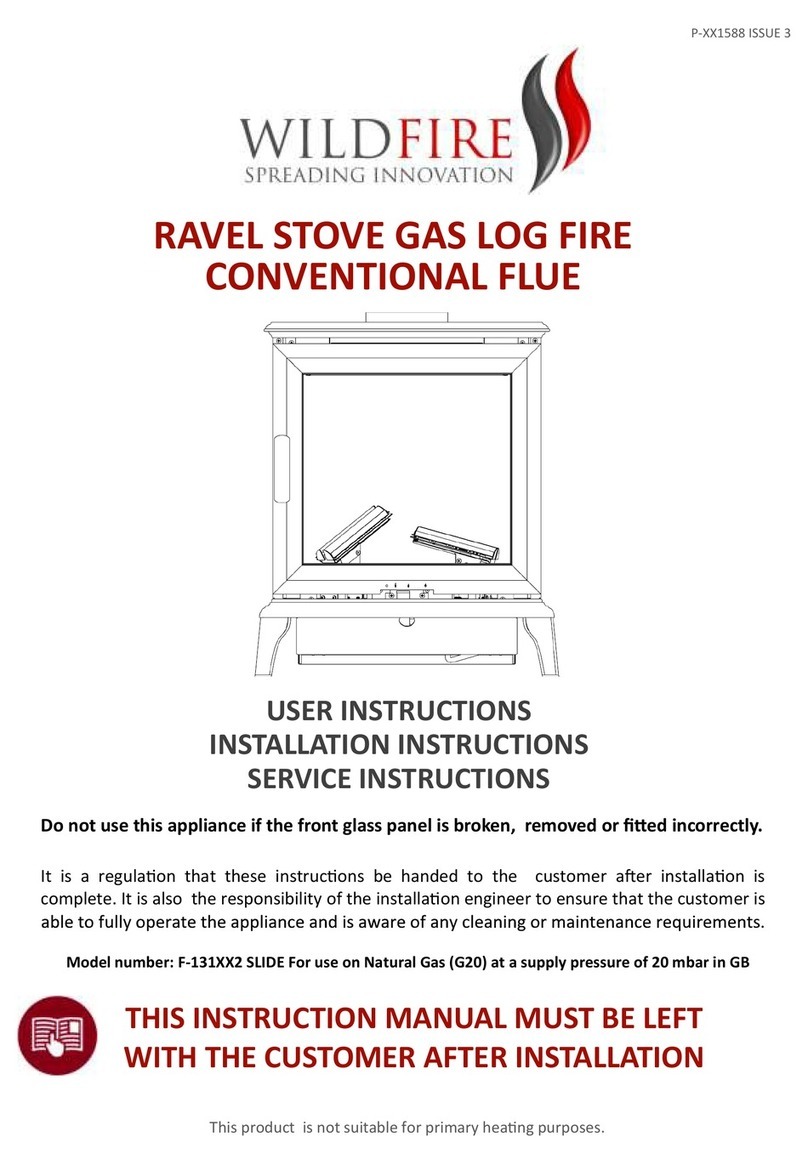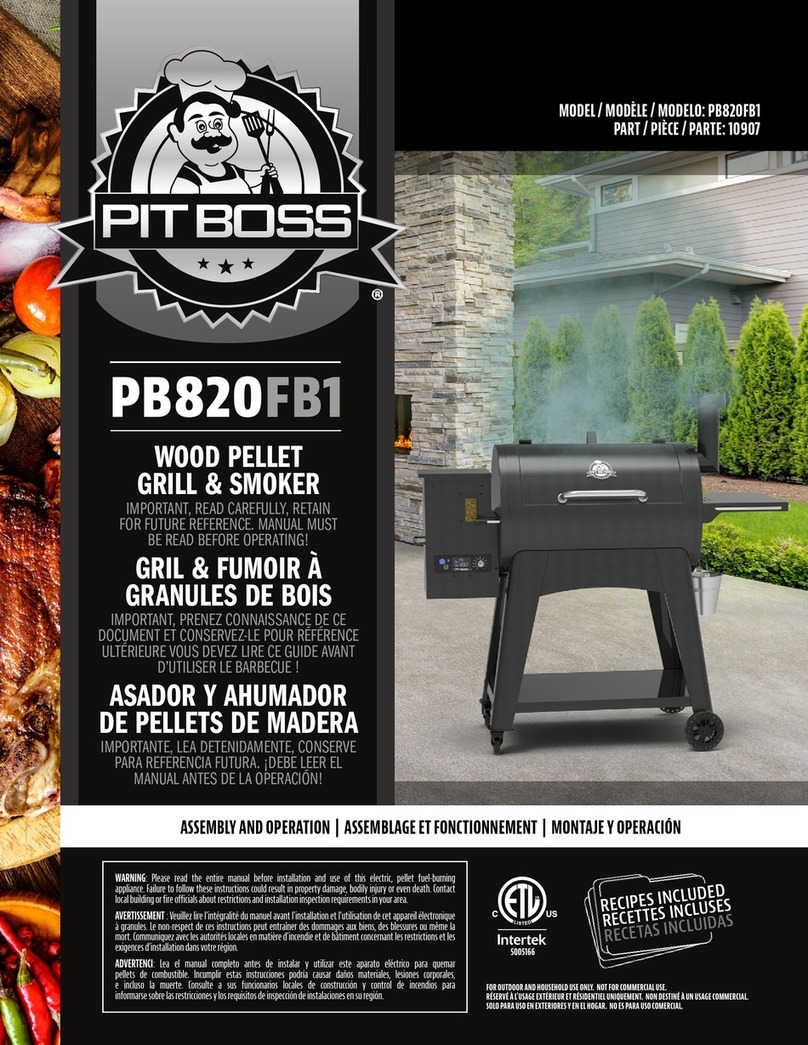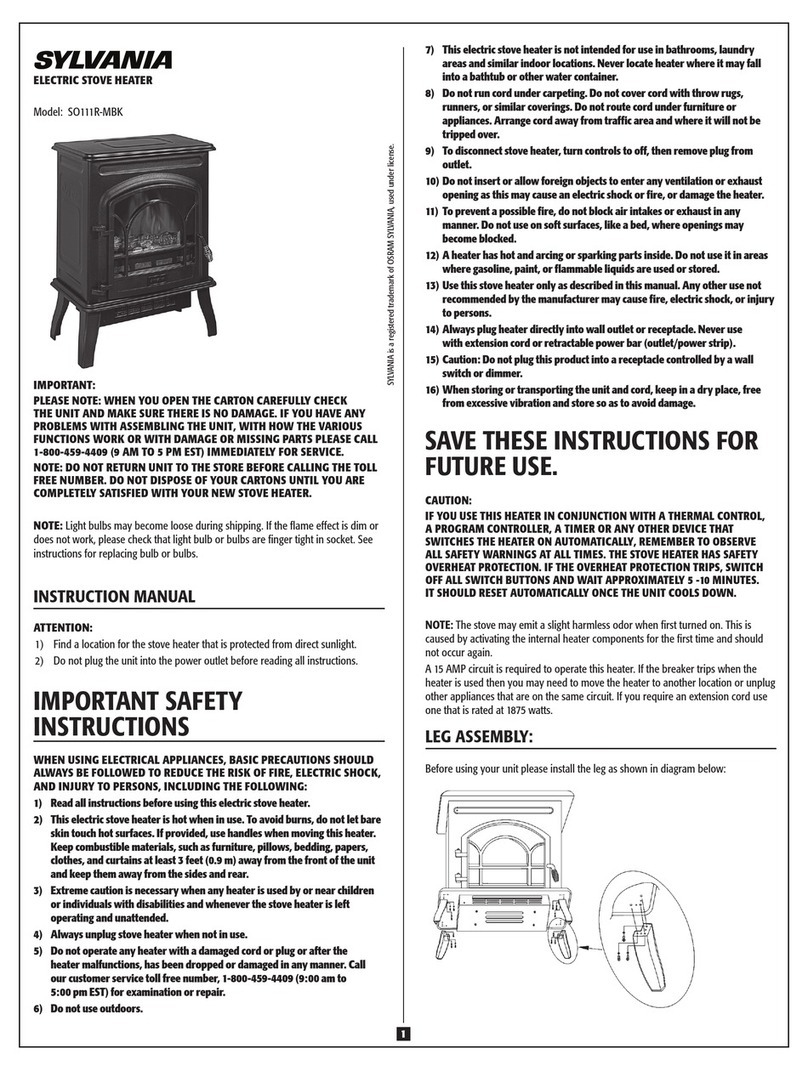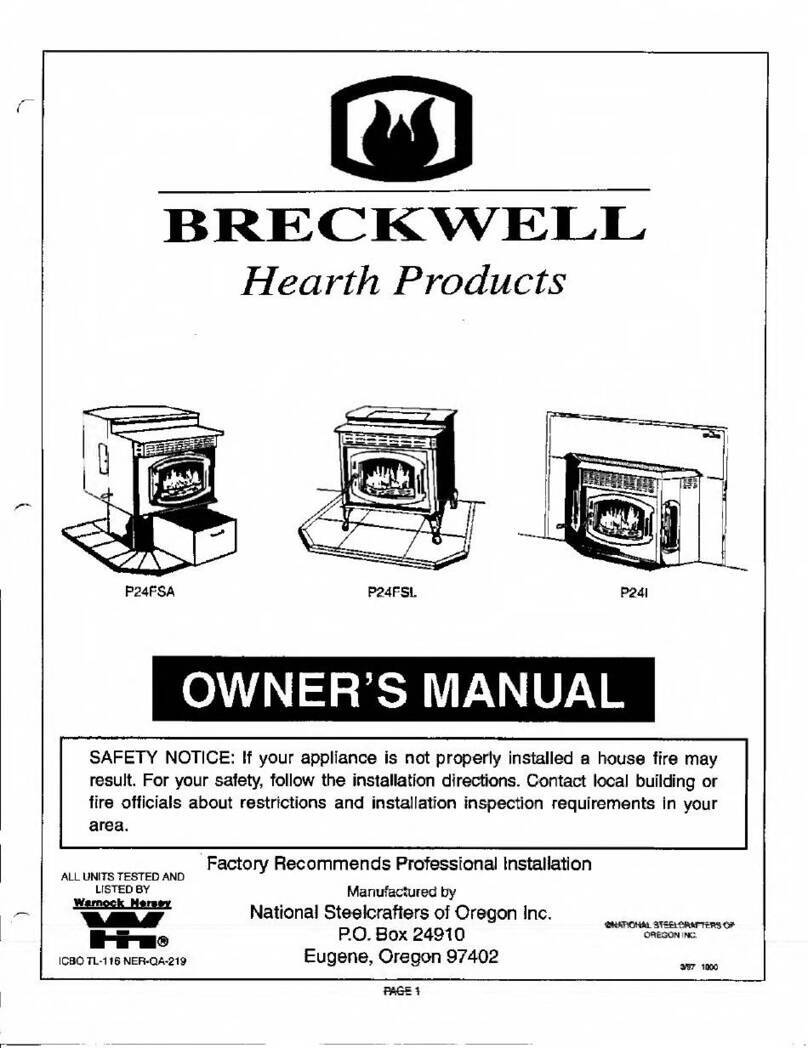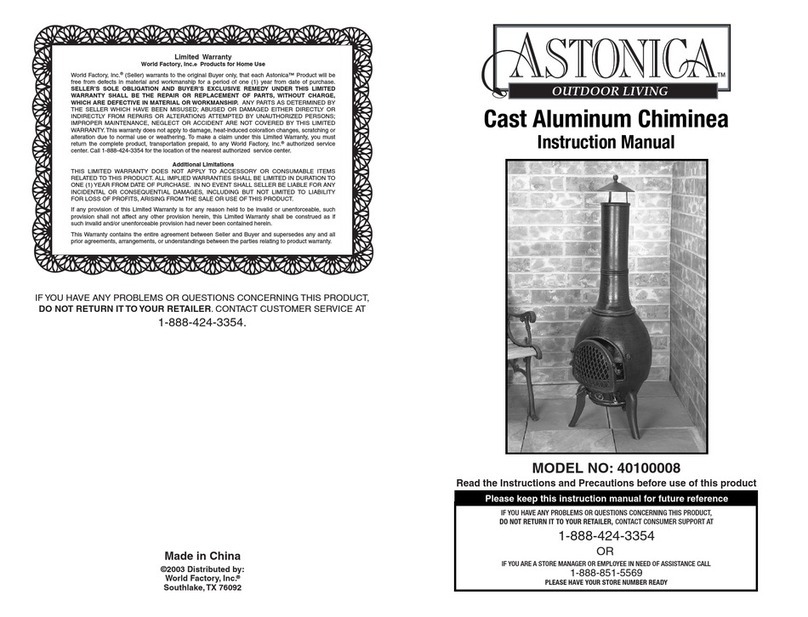
1GENERAL STANDARDS ...........................................................................................5
1.1 Fireplace or Chimney flue...................................................................................................5
1.2 Chimney pot.......................................................................................................................6
1.3 External air intake vent.......................................................................................................7
1.4 Connection to the chimney flue ..........................................................................................7
1.5 Preventing house fires........................................................................................................7
2SPECIFICATIONS AND TECHNICAL DATA.............................................................8
2.1 Specifications .....................................................................................................................8
2.2 Technical data (see attached sheet)...................................................................................8
2.3 Rear connection dimensions (see attached sheet) .............................................................8
2.4 Product identification data (see attached sheet) .................................................................8
2.5 Electrical diagrams .............................................................................................................8
3FUEL...........................................................................................................................9
3.1 General notes.....................................................................................................................9
4INSTALLATION........................................................................................................10
4.1 General notes...................................................................................................................10
4.2 Minimum safety distances ................................................................................................11
4.2.1
Corner installation (mm) ...................................................................................................11
4.2.2
Wall installation (mm) .......................................................................................................11
4.2.3
Distance from flammable ceilings and false ceilings (mm)................................................12
4.2.4
Distance of fume exhaust system from flammable walls (mm)..........................................12
4.3 Flooring protection............................................................................................................13
4.4 Minimum distances for positioning air intake vents ...........................................................13
4.5 Fume exhaust duct...........................................................................................................14
4.5.1
General notes...................................................................................................................14
4.5.2
Tubes and maximum usable lengths ................................................................................14
4.5.3
Holes for exhaust tube passage on walls or roof: recommended insulation and diameter 15
4.5.4
Using a traditional type chimney flue ................................................................................15
4.6 Using an external fume duct.............................................................................................16
5ASSEMBLY ..............................................................................................................17
5.1 General notes...................................................................................................................17
5.2 Unpacking ........................................................................................................................17
5.3 Electrical connection ........................................................................................................17
5.4 Water connection .............................................................................................................18
5.4.1 System filling ....................................................................................................................18
5.5 Heating stove hydraulic diagram) .....................................................................................19
5.5.1 Indicative hydraulic diagram heating only.........................................................................20
5.6 External thermostat installation ........................................................................................20
6USE...........................................................................................................................21
6.1 Console description..........................................................................................................22
6.2 First ignition......................................................................................................................23
6.3 Ignition and normal operation ...........................................................................................23
6.3.1 Stove start-up...................................................................................................................23
6.3.2 No start-up .......................................................................................................................24
6.3.3 Normal Operation.............................................................................................................24
6.3.4 Modulation based on room temperature ...........................................................................25
6.3.5 Modulation based on boiler water temperature.................................................................25
6.3.6 Circulator..........................................................................................................................26
6.3.7 Brazier cleaning ...............................................................................................................26
6.3.8 Shutdown .........................................................................................................................26
6.3.9 Interruption of power supply .............................................................................................26
6.3.10 Remote control. ..........................................................................................................26
7MENU........................................................................................................................27
7.1 Menu 01 "WATER PRESSURE" ......................................................................................27
7.2 Menu 02 "CLOCK SET"....................................................................................................27
7.3 Menu 03 "CHRONO SET" ................................................................................................27
7.3.1 Menu 3-1 “ENABLE CHRONO” ........................................................................................28
7.3.2 Menu 3-2 “DAILY PROGRAMME”....................................................................................28

